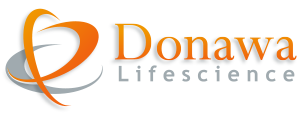Since the 1990s, all medical devices placed on the market in Europe have needed to comply with one of the European Directives for medical devices, namely the Medical Device Directive 93/42/EEC, the In Vitro Diagnostic Directive 98/79/EC, or the Active Implantable Medical Device Directive 90/385/EEC, and carry the CE mark as the legal indication of compliance. The CE mark is affixed to the product by the manufacturer after completing an appropriate conformity assessment process. However, in May 2017, two new European Regulations replaced these three Directives, these being the Medical Device Regulation (MDR, 2017/745), and the In Vitro Diagnostic Device Regulation (IVDR, 2017/746). Manufacturers are now in the process of transitioning their devices to MDR/IVDR compliance and ensuring that new devices meet the new requirements. Even well-established ‘legacy’ devices must go through the new conformity assessment process in order to remain on the market. There are exceptions to the dates of mandatory compliance, however, based on the expiry dates of MDD/IVDD Notified Body certificates and compliance with the transition extension requirements of amending regulation (EU) 2023/607. Donawa Lifescience can provide an interpretation of these exceptions for your devices, if required, but also assist with meeting the MDR/IVDR conformity assessment procedures and helping with responses to notified body technical documentation review non-compliances.
With senior regulatory consultants having many years of experience in medical devices, IVDs and combination products, Donawa Lifescience is ideally placed to help with every aspect of the CE marking process, including quality management systems, conformity assessment routes, technical documentation, post-market activities, and clinical investigation and evaluation.
For medical devices, the routes available for manufacturers to obtain the CE mark depend on a number of factors, including risk classification, type of product, internal quality management system and human/technical resources. For higher risk devices, the CE mark can be affixed only after involvement of a Notified Body, to either verify compliance of the product with the ‘General Safety and Performance Requirements’ (GSPRs) and/or the manufacturer’s quality system with regulatory requirements. Once your device is on the market, additional requirements apply in relation to the reporting of adverse incidents to the Competent Authorities designated by each EU member state.
Donawa Lifescience provides a fully comprehensive service to help you market your medical devices in Europe, from simply answering questions on the process to a significant involvement in quality system development and assessment, classification rationale, technical documentation preparation, including standards identification, GSPR compliance, risk management, clinical evaluation, and manufacturing documentation, together with post-market surveillance and reporting.
Among the new requirements in the MDR and IVDR are specific obligations for Importers and Distributors (as defined in the regulations). The role of Importers in particular has expanded to include several checks and other regulatory requirements. Importers are not necessarily designated by non-EU manufacturers, but become de facto Importers if that entity is the first to receive medical devices from non-EU companies. Many Importers therefore do not understand their role in this new regulatory process, including the need to register with Eudamed and obtain a Single Registration Number (SRN). Donawa Lifescience can help Importers develop the necessary procedures to comply with these new requirements and ensure continued compliance.

